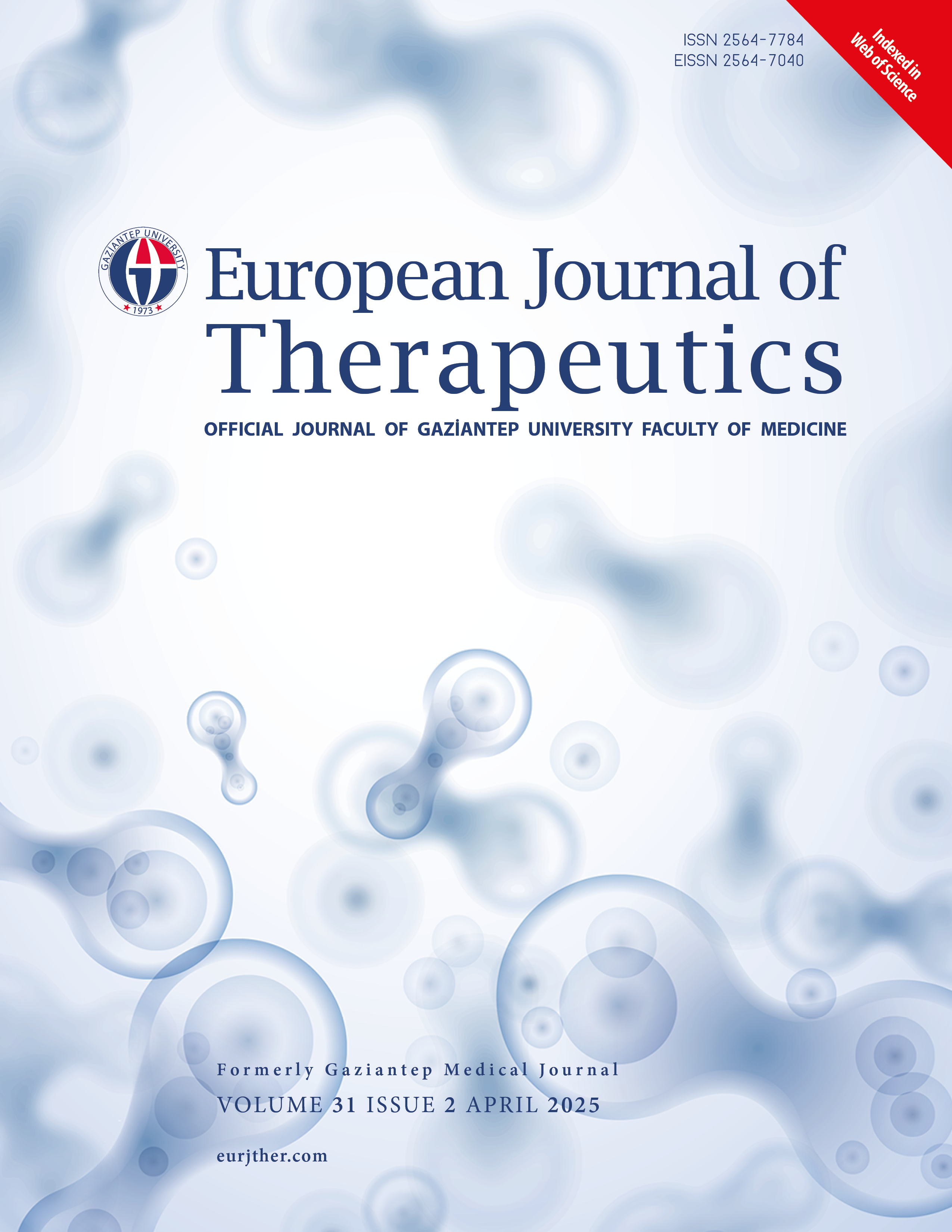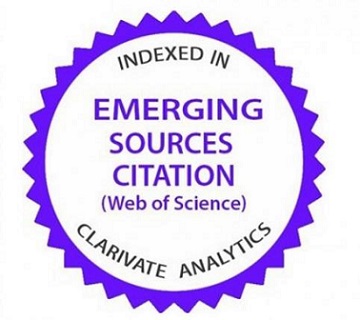Topical Steroid Treatment for Meatal Stenosis: Clinical Outcomes and Uroflowmetry Assessment of Treatment Success
DOI:
https://doi.org/10.58600/eurjther2676Keywords:
meatal stenosis, meatotomy, steroid, uroflowmetryAbstract
Objective: The aim of this study is to assess the efficacy of topical steroid use in meatal stenosis (MS), which is one of the most common complications of circumcision.
Methods: The medical records of children treated for MS between November 2022 and June 2024 were retrospectively analyzed. Demographic data, clinical information, and UF parameters were recorded. Maximal flow rate (Qmax)/voided volume (VV) ratios were calculated using data from uroflowmetry (UF). Group 1 comprised patients receiving topical steroids, whereas Group 2 consisted of patients necessitating meatotomy due to failure of steroid therapy.
Results: The study comprised 32 children with a mean age of 5.1±1.8 years at the time of admission. Of these, 16 (50.0%) belonged to Group 1, and 16 (50.0%) belonged to Group 2. No significant differences were observed between the groups regarding age at admission, age at circumcision, or Q max values before or after treatment (p>0.05 for all). The Q max / VV ratios post-treatment were higher in Group 1 compared to Group 2, despite no significant difference in Q max/VV between the groups pre-treatment (p=0.006 and p>0.05, respectively). Post-treatment Q max values and Q max/VV ratios were higher compared to pre-treatment in both groups (p<0.001 for both). The overall success rate of topical steroids was 50.0%.
Conclusion: Topical steroids appear to be an effective initial, non-invasive treatment for MS in selected patients only. UF can be used in MS as an objective test.
Metrics
References
Siroosbakht S, Rezakhaniha B. (2022). A comprehensive comparison of the early and late complications of surgical circumcision in neonates and children: A cohort study. Heal. Sci. Reports. 5(6):e939. https://doi.org/10.1002/hsr2.939
Frisch M, Simonsen J. (2018). Cultural background, non-therapeutic circumcision and the risk of meatal stenosis and other urethral stricture disease: Two nationwide register-based cohort studies in Denmark 1977–2013. Surgeon. 16(2):107–118. https://doi.org/10.1016/j.surge.2016.11.002
Morris BJ, Krieger JN. (2017). Does Circumcision Increase Meatal Stenosis Risk? A Systematic Review and Meta-analysis. Urology. 110:16–26. https://doi.org/10.1016/j.urology.2017.07.027
Acimi S, Abderrahmane N, Debbous L, Bouziani N, Mansouri JM, Acimi MA, Boukhari Y, Hadjeb N, Yazi AE. (2022). Prevalence and causes of meatal stenosis in circumcised boys. J. Pediatr. Urol. 18(1):89.e1-89.e6. https://doi.org/10.1016/j.jpurol.2021.10.008
Tiryaki S, Issi Y. (2023). The association of meatal stenosis and infant circumcision. Turk. J. Pediatr. 65(4):661–666. https://doi.org/10.24953/turkjped.2023.46
Johnson N, Lau G, Barabash T, Kurtz M, Kropp K, Liu D. (2011). Efficacy of Topical Steroids in Treating Meatal Stenosis. J. Urol. 185(4S):e227. https://doi.org/10.1016/j.juro.2011.02.1288
Neheman A, Rappaport YH, Darawsha AE, Leibovitch I, Sternberg IA. (2019). Uroflowmetry Before and After Meatotomy in Boys with Symptomatic Meatal Stenosis Following Neonatal Circumcision A Long-term Prospective Study. Urology. 125:191–195. https://doi.org/10.1016/j.urology.2018.12.005
Varda BK, Logvinenko T, Bauer S, Cilento B, Yu RN, Nelson CP. (2018). Minor procedure, major impact: Patient-reported outcomes following urethral meatotomy. J. Pediatr. Urol. 14(2):165.e1-165.e5. https://doi.org/10.1016/J.JPUROL.2017.10.012
VanderBrink BA, Gitlin J, Palmer LS. (2008). Uroflowmetry Parameters Before and After Meatoplasty for Primary Symptomatic Meatal Stenosis in Children. J. Urol. 179(6):2403–2406. https://doi.org/10.1016/J.JURO.2008.01.169
Downloads
Published
How to Cite
License
Copyright (c) 2025 European Journal of Therapeutics

This work is licensed under a Creative Commons Attribution-NonCommercial 4.0 International License.
The content of this journal is licensed under a Creative Commons Attribution-NonCommercial 4.0 International License.


















